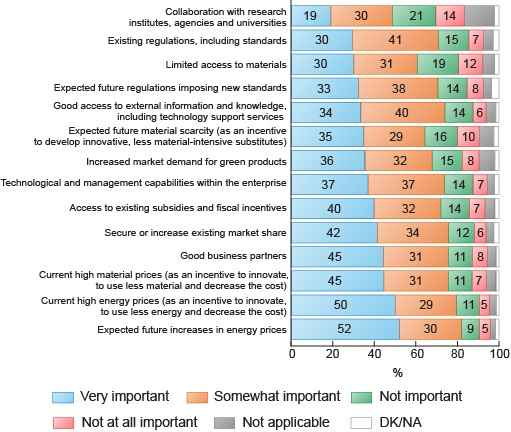1.17 Accelerating eco-innovation
Efforts to address these barriers were also considered within the same report and are shown in Figure 9.
Activity 17 Accelerating eco-innovation
Review Figure 9. Identify the main drivers that might address the barriers and accelerate the uptake of eco-innovation.
Provide your answer...
Discussion
Focusing on the top five main drivers (those identified as very important) to accelerate eco-innovation, Figure 9 suggests these are related to market share, being a good business partner and, most important of all, a range of drivers related to reducing exposure to costs. Notably, within the ‘somewhat important’ category, the main drivers are existing regulations and standards, access to information, and knowledge and support services, closely followed by expectations of future regulatory standards. Overall, this graph suggests costs and regulatory requirements are key drivers of eco-innovation.
It is important to remember that these tables are reporting on business organisations and, within that, SMEs. The drivers for other types of organisation may vary, but it is likely that for many organisations finance and uncertainty of several aspects (e.g. payback and performance) are likely to remain key barriers.

